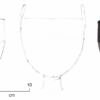The YouTube comments sections of politically neutral news outlets might be more conducive to cooperative, cross-partisan conversation than their liberal and conservative counterparts, according to a study published May 29, 2024 in the open-access journal PLOS ONE by Seung Woo Chae and Sung Hyun Lee from Indiana University.
The study, which focused on the media response to the 2019 release of the Mueller report, found that more cross-partisan discussions took place on liberal channels than conservative ones and mainstream news outlets hosted more cross-partisan comments than political vlogs.
Many news consumers learn about the world through social media, described by some research studies as a political echo chamber: an environment where a user’s political opinions are reiterated and bounced back at them. Pushback against this perspective posits social media as a constructive, cross-partisan forum where liberal and conservative users openly discuss their perspectives.
Chae and Lee enter this conversation in the context of YouTube videos posted about a pivotal political moment: the April 18, 2019 release of the Report On The Investigation Into Russian Interference In The 2016 Presidential Election, commonly known as the Mueller report.
They examined the comments sections from 17 YouTube videos shared in response to the Mueller report, 10 of which were posted by popular political vloggers (half liberal, half conservative) and seven of which came from mainstream news outlets—some liberal (like CNN), some conservative (like Fox News), and one neutral (C-SPAN). The researchers used manual and computational methods to analyze the videos’ comments and study how political parties were represented in each.
Results indicated more cross-partisan discussions on liberal YouTube channels than conservative ones. Regardless of political leaning, mainstream news outlets generally had more cross-partisan discussions than the vlogs. The only neutral news outlet included in the study, C-SPAN, contained the most balanced number of conservative and liberal comments.
The researchers acknowledge that not all cross-partisan commentary is necessarily constructive, citing some such comments as “troll-like.” Data gathered in this study should be interpreted in the unique context of the Mueller report; the researchers encourage future studies to examine the dynamics of YouTube comments in broader and different contexts.
The authors add, “We found that the proportion of cross-cutting discussions significantly varies by both the channel’s political leaning and media type. In addition, our results suggest the possibility of neutral news outlets as a place for cross-cutting discussions.”
More information:
Where do cross-cutting discussions happen?: Identifying cross-cutting comments on YouTube videos of political vloggers and mainstream news outlets, PLoS ONE (2024). DOI: 10.1371/journal.pone.0302030
Provided by
Public Library of Science
Citation:
YouTube’s comments section: Political echo chamber or constructive cross-partisan forum? (2024, May 29)



